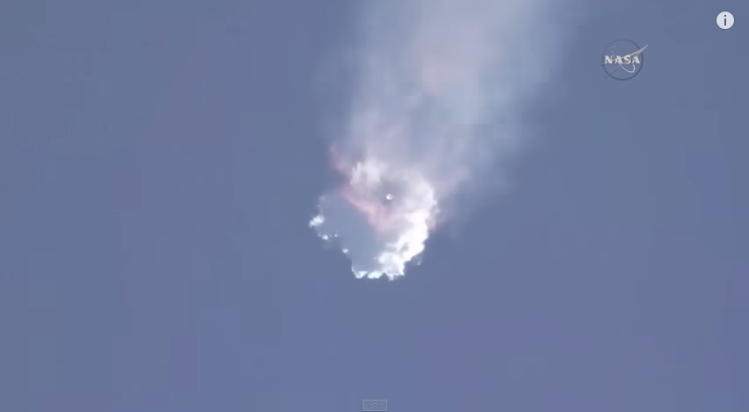Houston, we have a SpaceX problem. Again.
The privately held company today attempted to send its Falcon 9 rocket and Dragon spacecraft to the International Space Station to deliver cargo from the Kennedy Space Center in Cape Canaveral, Florida. But three minutes after launch, the rocket blew up.
https://www.youtube.com/watch?v=2K030HRTutU
Just before a NASA press conference to talk about this CRS-7 mission, SpaceX founder and chief executive Elon Musk wrote on Twitter that there had been “an overpressure event in the upper stage liquid oxygen tank.”
There was an overpressure event in the upper stage liquid oxygen tank. Data suggests counterintuitive cause.
— Elon Musk (@elonmusk) June 28, 2015
For at least one reason, this is not good: An exploded rocket is a rocket that SpaceX can’t reuse — and that means the company has to spend money to build a new rocket. (Incidentally, today is Elon Musk’s 44th birthday.)
Two Microsoft HoloLens augmented-reality headsets were among the cargo headed up to the ISS, thanks to a new partnership between Microsoft and NASA. “@NASA we’re with you and ready to try again!” Microsoft chief executive Satya Nadella wrote in a tweet. Also on board were food, water, a docking system, a space suit, students’ research projects, and other equipment.
“What I can tell you at this point is the first-stage flight remained nominal,” SpaceX president and chief operating officer Gwynne Shotwell said during the press conference. “We do not expect to this to be a first-stage issue.” She did not provide any further detail about the explosion, other than that what happened at 10:21 a.m. Eastern was “an anomaly.”
“We must find the cause of the failure,” Shotwell said. “We must fix it.”
The Federal Aviation Administration (FAA) has classified the incident as a “mishap” and has safety inspectors monitoring activity onsite, an FAA spokeswoman said during the press conference.
“Once we identify the issues, we will submit a document to the FAA,” Shotwell said. “It will be considered prior to the next flight. I don’t have a timeline for that right now. It certainly isn’t going to be a year — I imagine a number of months or so.”
Today’s incident follows a string of flawed SpaceX missions.
Three months ago, the SpaceX Falcon 9 rocket succeeded in launching but exploded as it landed vertically on SpaceX’s drone ship.
“Cause of hard rocket landing confirmed as due to slower than expected throttle valve response,” Musk noted on Twitter at the time.
The Falcon 9 also had a crash landing in January as it attempted a landing on the drone ship. And in February a SpaceX rocket came very close to landing on the drone ship but ultimately came down just 10 meters shy of it, heading right into the ocean.
SpaceX in January announced that it had raised $1 billion from Google, among others.


